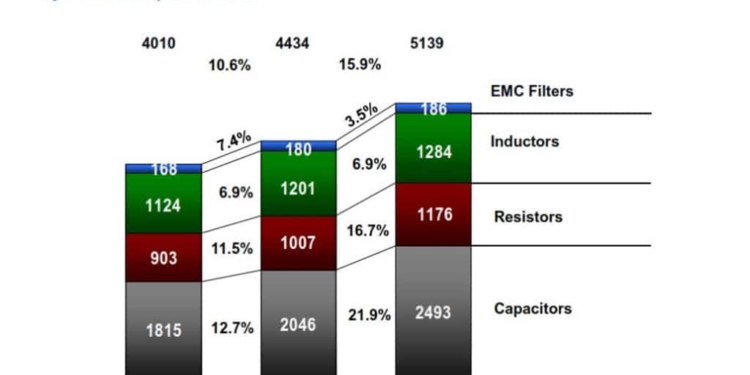Source: EPCIA news
The European Passive Components Industry Association (EPCIA) has just issued its 44th newsletter issue with an update on 2016-2018 European market passive components statistics and growth rate numbers.
The European Passive Components Industry Association (EPCIA) represents and promotes the common interests of the Passive Components Manufacturers,E&E Associations and Technological Research Institutes active in Europe to ensure an open and transparent market for Passive Components as part of the global market place.
Based on the aggregated results of the common European Passive Components Statistics (EPC-eStat), the markets developed as follows: In 2016the European Passive Components market increased to a volume of EUR 4.0bn and could continue the healthy development in the following years 2017 and 2018 with a steady growth of 10.6% and 15.9% respectively, to a total of EUR 5.1bn in 2018.
Product Groups
With a share of almost 50%, Capacitors are the largest product group of the Passive Components Market in EMEA. After a growth of 12.7% in 2017 and exceeding a market size of EUR 2.0bn Capacitors continued to grow in 2018. Last year the Capacitors market was up 21.9% YoY and reached a level of almost EUR2.5 bn. MLCCs were the main driver for this positive trend.
Resistors account for 23% of the EMEA Passive Components Market. With a growth rate of 11.5% in 2017 and 16.7% in 2018, the Resistor market was close to EUR 1.2bn last year. Especially worth mentioning are Chip/SMD Resistors with an annual growth rate of 38% in 2018.
Inductors represent the second largest product segment among Passive Components in the EMEA market with a share of 25%. The growth of 6.9% in 2017, however, was relatively moderate compared to Capacitors and Resistors. The Inductors market reached a size of almost EUR 1.3bn in 2018.
The market for EMC Filters totaled around EUR 190million 2018. The corresponding growth rate of 3.5%more than halved compared to the previous year.
Main European Market Segments
The Automotive sector represents half of the total Passive Components market in EMEA. With growth rates above average, Automotive was able to underline its importance for our industry in the last two years. The second largest market segment is Industrial with a share of 35%. In both 2017 and 2018 it achieved double-digit growth rates, too.































